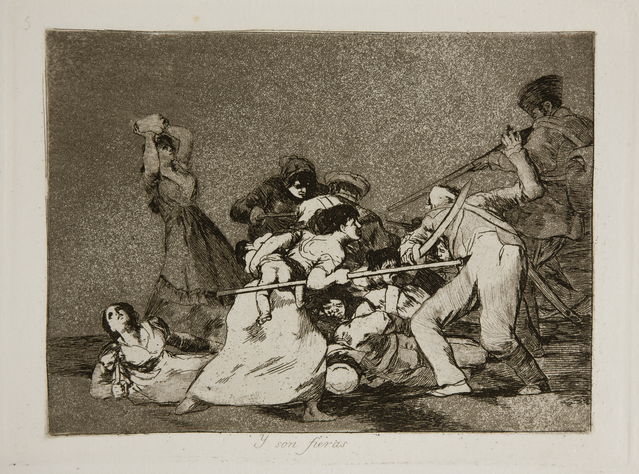Fear
Why Do We Harm Each Other?
Exploring how we can sometimes love monsters and hurt friends
Posted December 21, 2017

Not long ago, while doing research for my second novel, I interviewed a man who’d grown up in Beirut during the Lebanese civil war. Beirut, once called the Paris of the Middle East, had been a city known for its beauty and cultural sophistication where Maronite Christians, Druze, Sunni and Shia Muslims lived peaceably side by side. By 1958, however, sectarian politics had set neighbor against neighbor and engendered hatred between the groups. As my interviewee remembered, “The dear friend you played with as a boy might now knock on your door and shoot your mother in the face.”
How do we make sense of this? How could former friends and neighbors suddenly commit egregious acts of violence? Reading the oral histories of war victims suggests a pattern: under certain conditions, especially during times of state upheaval or governmental collapse, ordinary people can be persuaded to commit atrocities or to enable others to commit them. The outer chaos of change and disruption fosters confusion that undermines our sense of trust and confidence and can deeply affect our inner lives. Empathy is the ability to feel another’s suffering, but during times of stress, when our circuits for handling negative emotions get exhausted, we grow numb to the fear mounting within us. Self-preservation becomes our focus and our instincts drive us to align with the powerful, the winning side.

We don’t have to look to war zones to see evidence of this. To a lesser degree, it’s enacted on the playground, in classrooms, in corporations and in government. Although it may be comforting to think of a crazed gunman, a revolutionary, or cult leader as the sole perpetrator of evil, “good citizens” everywhere, even in our own country, have been responsible for or complicit in reprehensible crimes in the form of slavery, sex trafficking, child labor and inhumane labor conditions.
Closer to home, who hasn’t indulged in or colluded with the more minor indecencies of taunting, bullying, hazing, name-calling or ostracism? Telling an ethnic-slurring joke may seem harmless; yet if we have been the brunt of such a joke, we feel its poisonous barb. To think of someone as a category–a gook, a geek, a Pole, a retard—is to ignore that person’s individuality and make them into a “thing.” It is easier to hate a “thing” than a creature that resembles ourselves.
Neither hatred nor anger completely explains how intelligent, rational people do the unthinkable. In their testimony, Eichmann and other Nazi officials responsible for the death of millions prided themselves on having a fondness for individual Jews. To them, their lack of hatred exonerated them from their horrendous deeds and proved they were superior to the crass killers who enjoyed murdering others. In the minds of these courteous and civilized killers, they were only doing their jobs (mass extermination), and doing them well, another source of pride.

How do cruelty and meanness become normalized? As philosopher Elizabeth Minnich, one-time assistant to Hannah Arendt, writes in The Evil of Banality: On the Life and Death Importance of Thinking, “We know that we humans can shift our minds into making sense of and accepting things that, before we became insiders of utterly distorted systems, we would have found impossible to imagine ourselves approving of, let alone doing.”
Many people in the U.S. are surprised by the rank bitterness, anger and hatred circulating in the zeitgeist. We may even be surprised by our own vitriol. Our neighbor voted for the other guy (or gal), and we wonder How could he? We feel our differences are irreconcilable. Our friend is no longer our friend, she is Other.
Imagine this: The Powerful declare that people with red hair are to be guarded against. Warnings are issued. At first, no one thinks much about the warnings or laughs them off. How can a group as diverse as red-haireds be lumped together as dangerous? But then the warnings increase, suspicion takes root, and rumors abound. Fear infects people’s thought processes. As the fear increases, red-haireds go from being shunned, to being taunted, to being hunted and killed. Some of the greatest sci-fi movies of the fifties, The Invasion of the Body Snatchers, and the adaptation of George Orwell’s books, 1984 and Animal Farm (the 1954 American animation was funded by the CIA), aptly symbolize our fear of “aliens,” the national paranoia of communism at that time, and the surreality of living under absolute power. Orwell’s books, in particular, depict how the accretion of propaganda can numb our brains and change our hearts and minds. Lyricist Oscar Hammerstein II wrote his own version of this phenomenon for the musical South Pacific.
You've got to be taught
To hate and fear,
You've got to be taught
From year to year,
It's got to be drummed
In your dear little ear
You've got to be carefully taught.
You've got to be taught to be afraid
Of people whose eyes are oddly made,
And people whose skin is a diff'rent shade,
You've got to be carefully taught.

In the preliminary stages of propaganda, people’s perceptions of the Other change. Maybe that red-haired banker is embezzling my cash. Should I trust my kids with the red-haired babysitter? Once perceptions change feelings about a person change. The Powerful proclaim red-haireds are cockroaches. Soon they begin to look like cockroaches. We notice they don’t walk, they scurry. They stink like garbage; they disgust us. The vilification of another leads to his objectification. We know from history that if we dehumanize a person, it’s easier to take violent action against her. If our neighbor is now a bug, sub-human, we are free to remove her from our society. Squash the cockroach!
In his excellent chapter “The Fascist State of Mind” in the book, Being a Character: Psychoanalysis and Self Experience, psychoanalyst Christopher Bollas lists the mental mechanisms we use to dispassionately de-personalize the Other. The list includes distortion or slander of the other’s point of view; denigration or belittling of the other; caricature, or the cartooning of the other individual; character assassination; change of name as in labeling, and name-calling.

Bollas wonders why we often seem to love our monsters, those “most gifted practitioners” who have achieved “places of prominence by viciously attacking others.” “Indeed,” Bollas writes, “they [the monsters] also seem to be objects of endearment to those who otherwise would be horrified by such behavior.” One way Bollas understands this phenomenon is that we may try to recover from the trauma this individual has perpetrated in our world “by reminding ourselves how, in so many other ways, this person is not only sane but likable.”
What we do know is that when propaganda and the distortion of truth rule, we have stopped paying attention to reality and have ceded moral reflection and self-awareness to an authority outside the Self. As social beings engaged until death with our connection to others, we are called to live a thinking and feeling life. When we dissociate from the depths of our self-knowledge and abdicate the cultivation of our hearts and minds, we make room for the shadowy “Bluebeards” to dominate our world.
Watch the 1954 animated adaptation of George Orwell's Animal Farm.




